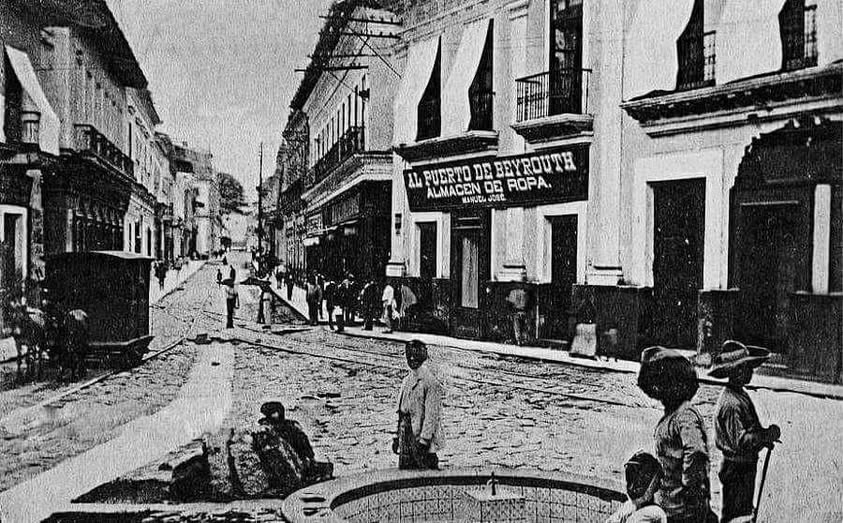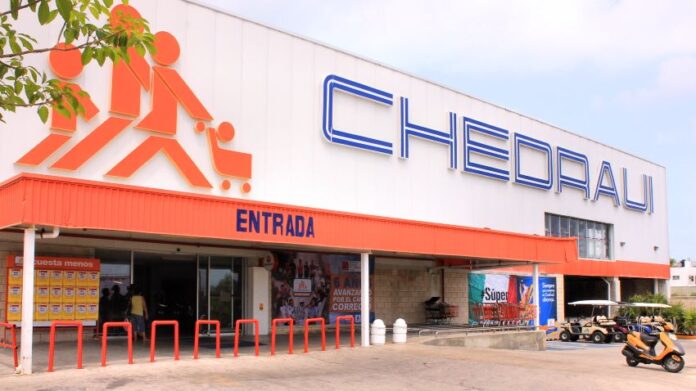For being such a compact and lightly visited city, Xalapa — the quaint capital of Veracruz — has provided the rest of Mexico with some of its most important amenities. Aside from being one of the country’s main coffee producing regions and the namesake and origin of jalapeños en escabeche, Xalapa is where Chedraui began. The nation’s most profitable Mexican-owned supermarket, Chedraui currently accounts for 19.3% of national grocery market sales.
Its blue, white and orange letters and logo of a young family strollering a baby forward announce themselves all over Mexico. Today, the supermarket can be found in 25 of Mexico’s 31 states under a variety of iterations: the more affordably-priced Super Chedraui, grocery and department store Tienda Chedraui, small and often self-service Chedraui Supercito and Chedraui Selecto, which carries high-end imports. Since 1997, Chedraui has even existed in parts of the United States, outgrowing its first U.S. outlet in South Gate, California, and present across the U.S. Southwest under the monikers El Super and Fiesta Mart.

A Lebanese-Jalapeño success story
Of course, Chedraui wasn’t always the standard for grocery shopping in Mexico. In fact, the store started out much like the first jalapeños en escabeche makers did: as an ad hoc operation in Xalapa in the first decades of the 20th century. Lázaro Chedraui, a Lebanese immigrant, and his wife Ana Caram officially opened Al Puerto de Beirut in Xalapa in 1920. Initially a men’s clothing store, they could be found on what is now the corner of Xalapeños Ilustres and Carrillo Puerto, a central artery of the city to this day. In 1927, the couple decided to rename their business into something more similar to what we know it as today: Casa Chedraui. Unfortunately, the original location of that Chedraui no longer exists, as the triangular, Flatiron-esque building is now occupied by a variety of small clothing stores and food businesses.
Despite their ubiquitous boom since then, Chedraui’s first expansion didn’t occur until 1961. 34 years after his parents’ store first opened, Lázaro and Ana’s son Antonio Chedraui Caram assisted in shepherding the business into the future by launching a supermarket known as Almacenes Chedraui, also in Xalapa’s downtown, on Calle Dr. Lucio.
Chedraui branches out
Nine years later, in 1970, the family’s first department-style mega store opened under the auspicious title of Super Chedraui. That branch remains and continues to serve a large clientele in downtown Xalapa, just around the corner from Chedraui’s original flagship. The store later added more departments and increased their total workforce to 180 employees — massive for the time. According to Xalapa Antiguo, a Facebook group dedicated to preserving local history, the Chedraui on Calle Dr. Lucio was one of the first buildings to use escalators in Veracruz’s capital.
The Calle Dr. Lucio store was designed by Enrique Murillo, perhaps Xalapa’s most prolific architect, with noteworthy buildings in locations including the port of Veracruz, Mexico City and Acapulco. During that time, Chedraui offered everything from groceries and clothing to auto service and vehicle maintenance. That same decade also brought the arrival of Chedraui outside of Xalapa, beginning in the port of Veracruz in 1976 and going as far as the neighboring state of Tabasco in 1983. Back then, the Chedraui chain hadn’t fully established itself, consolidating under Grupo Chedraui Comercial in 1985. Prior to that, each outlet operated independently. Grupo Chedraui slowly jettisoned former parts of its business plan over the years: the auto services and large department store offerings, for example, were sold to Liverpool, a recognizable chain store throughout Mexico in its own right, in 1997.

Chedraui went from being a regional chain to a national outlet in 2005, when they attempted their entry into Mexico City. It was Soriana, a similarly-sized grocery market from northern Mexico, that went on to gain a majority of Mexico City’s clientele. Generally, though, Chedraui has been a mainstay throughout the nation as a go-to shopping option for families.
For most of my life visiting my extended relatives in Xalapa, I’ve always assumed that Chedraui — both as a brand and as a family — were as integrated everywhere in Mexico as they are here. Of course, as a kid, I didn’t realize that their presence and familiarity was extra apparent in Xalapa, where I now live, because it’s where they first started out. Every year for Christmas, the large home that the Chedraui family still owns in the city is converted into a nativity scene. It’s customary to drive through the upscale neighborhood of Las Animas to see what the Chedrauis have set up, and to enjoy the ostentatious architecture and lake views in the neighborhood. My aunt claims that the family’s Christmas decorations keep expanding and taking up more lawn space year by year; this past year, they even incorporated a small portion of the neighborhood’s lake.
In 2017, 72% of Mexicans reported spending up to two hours at the supermarket per trip. That tends to mean strong associations with these stores. For Mexicans across the country, Chedraui tends to mean convenience. For Jalapeños, it means hometown pride.
